
I’ve heard it said often enough to believe that it’s true—that elegy is the oldest form of poetry. It makes abundant sense. There is, we know, a boundary that seems unbroachable in all our lives, that border between life and death, existence and destruction. An elegy is the poem that breaks through that boundary. It allows the image to live past the limits of the life of the beloved; and as countless poems can attest to, from Shakespeare to Elizabeth Barrett Browning, the memory also outlives the poet, rooting itself in us, who carry the blossom of it in our minds: that immemorial love lives on past time’s destruction.
But this article isn’t about a poem. It’s about something stranger—part poem, part sound-art, part architectural experiment, part foray into literary theory—a work that unexpectedly always adds up to more than the sum of its parts. It’s about The Aylesworth Suite, a collection of three pieces of music, each seeking to preserve not simply the memory—but the sonic imprint—of the now destroyed Aylesworth Hall. The music is made by two brothers, Brent and Grant Helzer, the component partners of The Echotheque. Both are graduates of CSU’s English Department, with Grant currently pursuing a Master of Fine Arts degree in Creative Writing. But the family bond goes even deeper. Their father, Dean Helzer, also works at CSU; as Operations Manager for the Collaboration for Student Achievement, a department once housed in Aylesworth Hall. Brent and Grant helped their father move box after box out of the office, witness to, and participants in, the growing emptiness that would open into a radical, interdisciplinary idea.
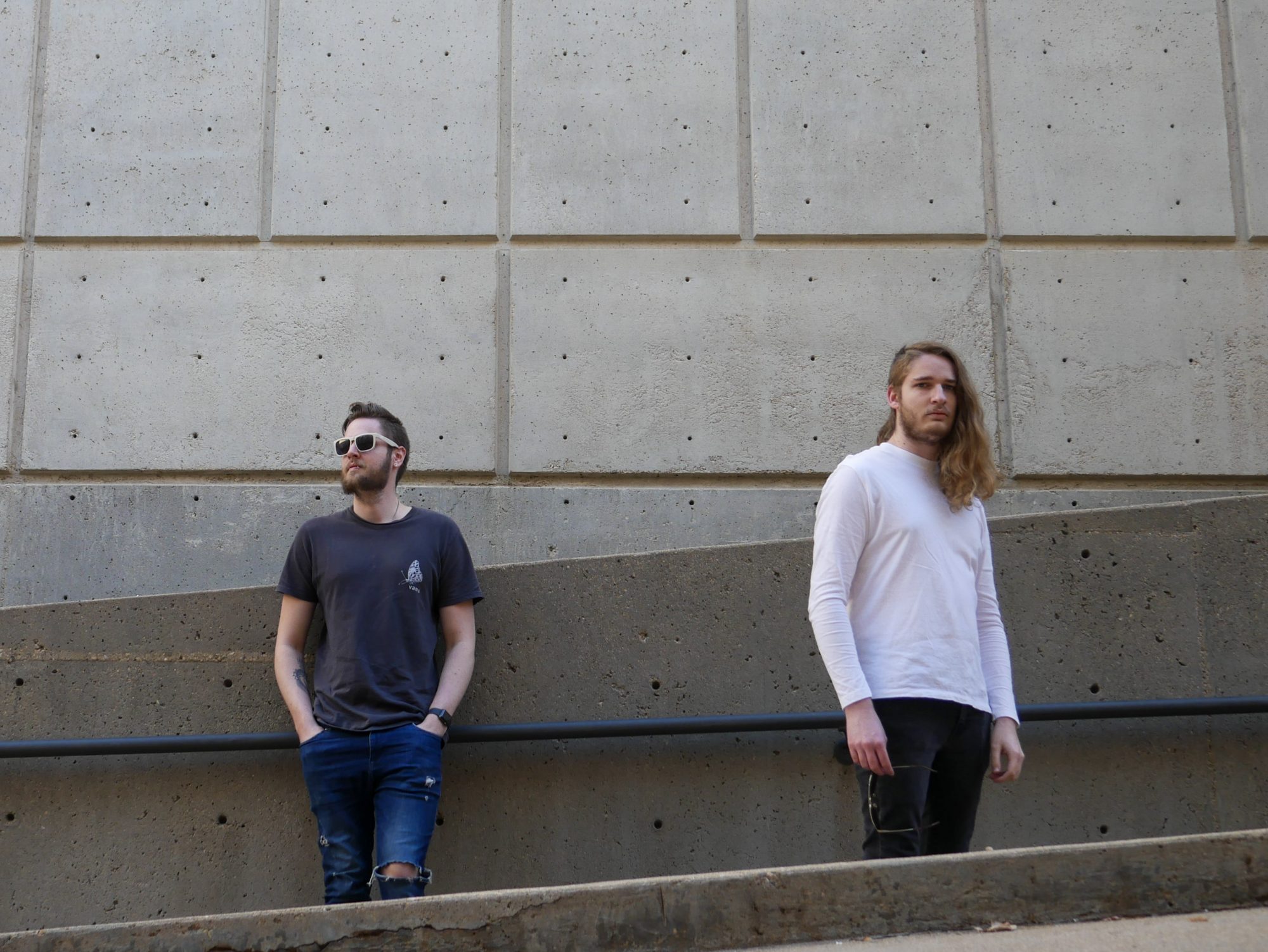
But first, a little about Aylesworth Hall itself. (And what a sweet thing is to realize that some of you reading this article may well have boarded or studied in Aylesworth yourselves!) Built in the 1950s by the architect James M. Hunter, Aylesworth Hall (with a few buildings of similar ilk) provided campus with a model of one of the most significant architectural movements of the 20th century—the International Style that emerged out of the pre-World War II German Bauhaus experiment, led by Walter Gropius and Mies van der Rohe, and was brought to global prominence by Le Corbusier, among others.
A purity of design marks the style, an elegance of line and basic materials: windows, steel, and stone. That stone, as James M. Hunter imagined it, would be the very sandstone that stands as signature across CSU’s whole campus. Aylesworth Hall opened as a men’s dormitory, was the first on campus to become co-ed and, after the fire that burned down Old Main, housed a number of academic departments and affiliated groups, not least of which is the internationally renowned Center for Literary Publishing.
But, history and its bitten gold aside, it is sadly safe to say that Aylesworth might have been one of the more under-loved buildings on campus—a judgment the Helzer brothers both sensed and disagreed with, and quite wondrously, as you can hear, decided to remedy. Brent and Grant turned to Adam Thomas, assistant teaching professor in history, whose expertise in architectural history and preservation undergirded the brother’s sense of Aylesworth Hall’s value and the need to find a means to preserve its memory for future generations of Rams.
Professor Thomas says, “It’s rare that students, undergraduates no less, take on not only your own preconceptions as college-level instructor but also challenge the very methods of your discipline. Brent and Grant Helzer have done exactly that with The Aylesworth Suite, a brilliant example of interdisciplinary creative problem solving.” English professor Paul Trembath’s work in literary theory gave them a framework to understand the philosophic importance of what they were hoping to do—this hope, wild it may be, to preserve the destroyed, to find a way to let the “Inexistant” (Alain Badiou’s term) continue, somehow, to exist. And with some financial support from English, who wants to help students pursuing those interdisciplinary visions the department itself is reaching toward, the Helzer brothers began their work.
It is sadly safe to say that Aylesworth might have been one of the more under-loved buildings on campus—a judgement the Helzer brothers both sensed and disagreed with, and quite wondrously, as you can hear, decided to remedy.
As Brent describes it, they had one goal: “to preserve the unpreservable.” To accomplish that paradoxical task, they took multiple paths. “We used several recording techniques when we approached recording the dormitory. We recorded Aylesworth at three different times during the last year and a half of its life, and created three pieces from each one of the three groups of sounds to build the Suite, focusing on the three different stages of demolition in which we recorded: Disuse, Empty, and Demolition.” Setting microphones to record in multiple spaces, from hallways to stairwells, offices to classrooms, Brent and Grant slammed doors, banged walls, moved boxes, clanged metal, moved chairs, shook windows, anything to create a unique sonic imprint in a given space that would eventually offer themselves as potent musical portrait for a building now gone.
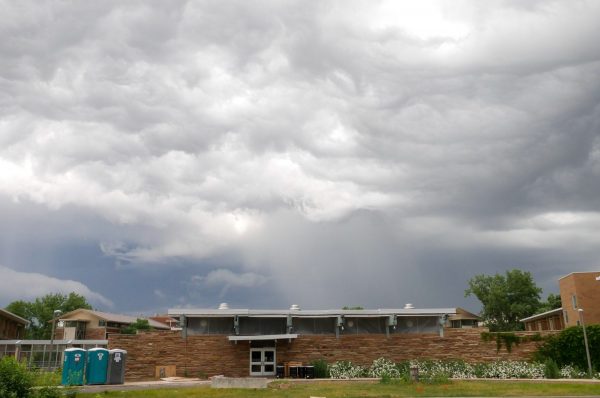
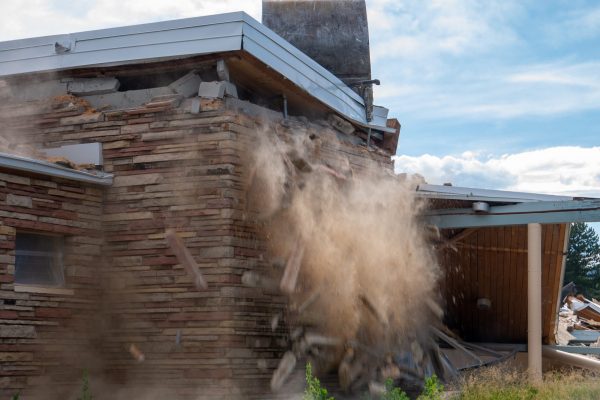

Certain experimental composers served as both inspiration and technical resource. Alvin Lucier’s recording of himself talking in a room, pressing play and recording again, the slow decay of interpretable words turning into noise of another kind, undergird much of the Helzer’s musical experiment. Jacob Kirkegaard’s 4 Rooms, a composition made at Chernobyl, offered clues to the use of noise in ambient space as creative collaboration with architecture.
To press play and listen to any one of the tracks is to find oneself immersed in sound, not the sound of walking Aylesworth’s absent halls, but more wonderfully and more strangely, enveloped in those possibilities of sound the building alone lets exist. It is music that is accurate and idiosyncratic, preserving and creative, all at once. It is also quietly revolutionary.
The Aylesworth Project Exhibition
The Department of Art and Art History presents the exhibition the Aylesworth Project by Grant and Brent Helzer, both graduates from the English program at CSU and experimental sound artists.
Location:
Directions Gallery, Visual Arts Building, CSU
551 W. Pitkin Street, Fort Collins, 80523, United States
Dates:
Dec. 6, 2021 – Jan. 21, 2022
9 a.m. – 4 p.m.
As Adam Thomas notes, “From their earliest days as students in my American Architectural History course, the Helzers have rather instinctively approached architecture in the manner of Buckminster Fuller, that is considering a building as a verb or evolutionary process. But they go a step further, extending that evolutionary process through the ‘inexistence’ of a building and, in the process, manage to preserve not bricks and mortar, but sense of place.” To know the source of the material is to be shocked at the result. How can a set of bangs and screeches, thuds and rattles, become music that feels symphonic, emotional, somber; or, as Brent so succinctly puts it, both “peaceful and doomed.”
I feel that peace when I listen; and feel something of the doom, too. But not doom in mournful ways. I hear the impending loss of something already gone as if it were still standing among us, waiting for any of us to enter. And in a way, it is. You enter by closing your eyes and listening. Then you step in.
About the Author
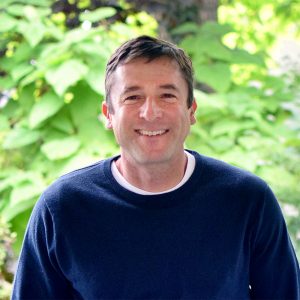
Dan Beachy-Quick is a professor of poetry and a University Distinguished Teaching Scholar at Colorado State University. He is the author of six books of poetry, as well as collections of essays and translation from the ancient Greek. He is a past Monfort Professor and received a Guggenheim Fellowship in 2015.
Beachy-Quick was awarded the Colorado Prize in 2011 for his book, Circle’s Apprentice, and the Academy of American Poets named it the Notable Book of that year.
Beachy-Quick was a finalist for the Colorado Book Award in Poetry, the William Carlos Williams Award and the PEN USA Literary Award in Poetry in 2010 for This Nest, Swift Passerine. He serves as a contributing editor for the journals West Branch and A Public Space.
Navigating Borders
From water to dance, science to film, clay to gender, the liberal arts helps us navigate the borders in our lives that are physical, metaphorical, or cultural.
